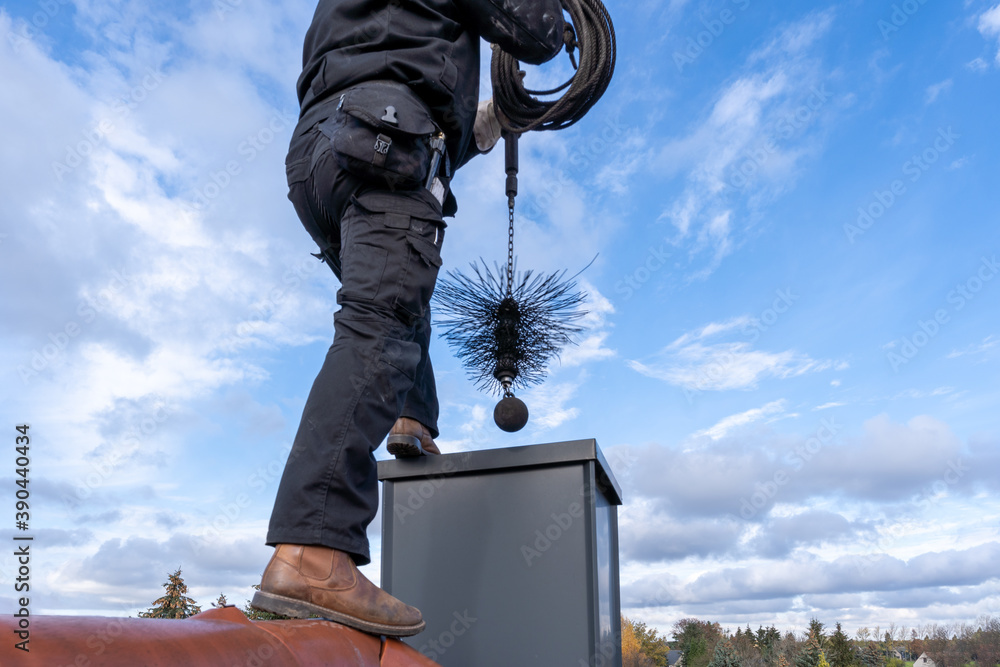As the temperatures in Dallas start to dip and pumpkin spice takes over the world, it’s officially time to start thinking about winter prep. And no, we’re not just talking about cozy blankets and hot cocoa—we’re talking about your chimney.
Whether your fireplace is the centerpiece of holiday gatherings or simply your go-to on chilly nights, there’s one critical question you should be asking yourself: Is your chimney ready for winter?
Why Chimney Prep Isn’t Just a Cold-Weather Tradition
Let’s get something straight. Preparing your chimney for winter isn’t just about tradition—it’s about safety and functionality. Over time, chimneys collect soot, ash, and a fun little substance called creosote. It’s sticky, it’s flammable, and it loves to build up inside your flue. If left unchecked, it can spark a chimney fire faster than you can say “logs on the fire.”
Add to that the potential for blockages (hello, bird nests and leaves) or structural issues caused by weather damage, and you’ve got a recipe for trouble. A neglected chimney can send smoke back into your home, reduce heating efficiency, and even leak carbon monoxide. Not quite the winter vibe you were going for.
What Happens When You Use a Dirty Chimney?
Lighting a fire in a dirty chimney is like trying to run a marathon in the wrong shoes—technically possible, but not recommended.
When creosote coats the inside of your chimney, it creates resistance for the smoke and gases trying to escape. This leads to poor draft, more smoke in the house, and a much higher risk of fire. In some cases, the smell of burnt creosote may even linger in your home when the fireplace isn’t being used.
Also, let’s not forget how moisture can mix with soot to create acidic residue, slowly eroding the chimney liner. So while that occasional puff of smoke might seem like no big deal now, it could be a signal that your chimney’s in distress.
Dallas Winters Are Sneaky—Get Ahead of the Cold
Let’s be real: Dallas weather loves to surprise us. One minute it’s sunny and pleasant, the next you’re waking up to frost-covered lawns. That’s why chimney readiness can’t be a last-minute thing.
A chimney inspection and sweep before the first fire of the season gives you peace of mind. It also gives a technician the chance to check for signs of wear and tear that might have been brewing during the warmer months. Loose bricks, cracked flue liners, or missing caps are all things that can make your fireplace not just inefficient—but dangerous.
And if you own a business with a working fireplace or heating system that vents through a chimney, winter readiness is even more important. Customers and employees expect a safe, clean, warm environment—and that starts with maintenance.
The Inspection: More Than Just a Quick Look
A proper chimney inspection isn’t just someone shining a flashlight and calling it a day. It’s a top-to-bottom assessment of your system, including the interior flue, chimney crown, flashing, damper, and firebox.
A seasoned professional will check for signs of blockage, buildup, animal activity, or cracks in the masonry. They’ll also ensure your chimney cap is in place (if it’s missing, that’s like leaving your roof open during a rainstorm). If repairs are needed, they’ll provide recommendations before anything becomes urgent.
If you’ve never had an inspection—or it’s been more than a year—consider this your sign. You’d be surprised how many minor issues can turn major if left alone through another season.
Chimney Cleaning: Not Just for Looks
Sure, a clean chimney looks great from the outside, but the real benefit is on the inside. During a sweep, technicians remove soot, creosote, and any debris that could interfere with airflow.
This means fires burn cleaner, heat stays where it belongs, and you reduce the chance of dangerous flare-ups. Plus, it just feels better knowing your fireplace is working the way it’s supposed to—no strange smells, no smoke-filled rooms, and definitely no emergency calls on a freezing night.
And if you’ve been hearing odd sounds from up top (scratching, chirping, or the occasional flutter), a sweep is the perfect time to evict any uninvited guests. Birds and small animals love a warm chimney in winter. Unfortunately, they’re not great roommates.
Curious About the Process? Click Here for more information
If you’ve made it this far and you’re wondering what a full chimney service includes—or how often it should be done—you’re not alone. For a breakdown of what to expect and how to choose a reliable technician.
It’s always smart to be informed, especially when your family’s safety is involved. A little knowledge goes a long way in making sure you get the service you actually need (and not a sales pitch disguised as an inspection).
The Best Time to Book? Right Now.
Here’s the deal—waiting until winter to schedule chimney services is like trying to buy a snow shovel during a blizzard. Everyone’s already booked, prices go up, and you might be left without service during the coldest nights.
Fall is the ideal time to get ahead. Chimney professionals tend to have more availability, and you’ll beat the holiday rush. Whether you’re preparing for quiet evenings by the fire or hosting a full-blown family gathering, a safe and clean chimney helps make it all possible.
It’s one of those things you’ll wish you had done earlier—especially when the first real cold snap hits and you’re ready to fire up the hearth.
Wrapping It Up: Don’t Skip the Chimney Check
So here’s the bottom line: your chimney works hard all winter long. It handles fire, smoke, weather, and wildlife—often without much thanks. The least you can do is give it a little pre-winter TLC.
From inspections and cleanings to repairs and upgrades, making sure your chimney is ready means fewer problems, lower risks, and a whole lot more comfort.
Ready to take the next step? Click here for more information and find out what your chimney might be hiding. After all, the coziest fire is one you don’t have to worry about.







